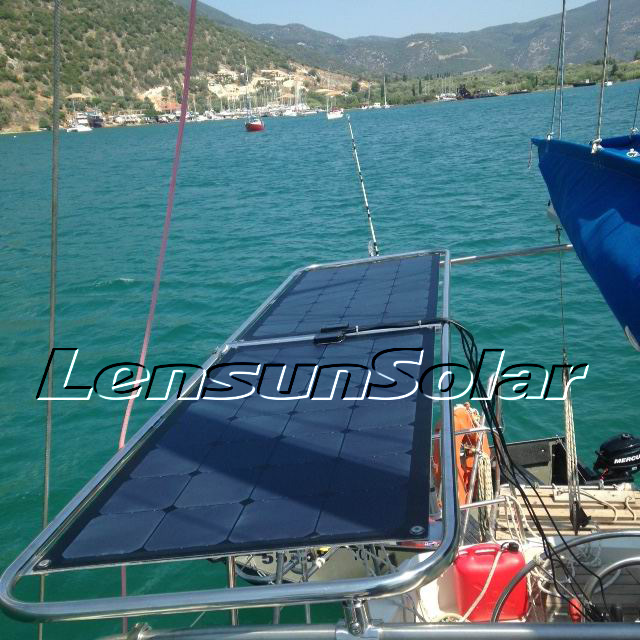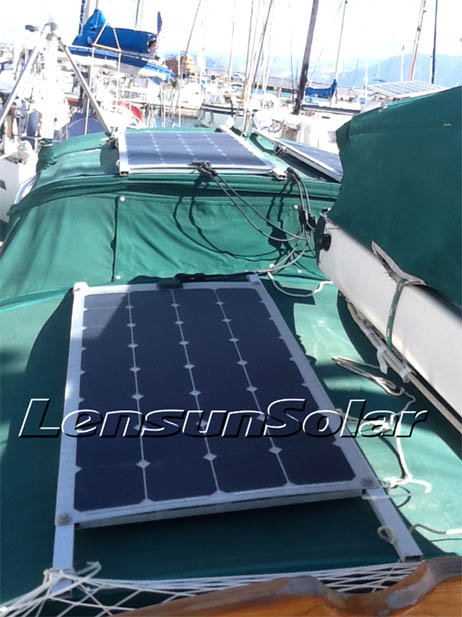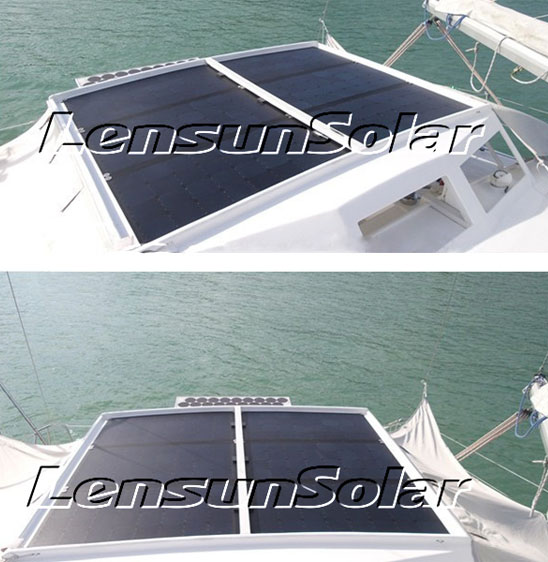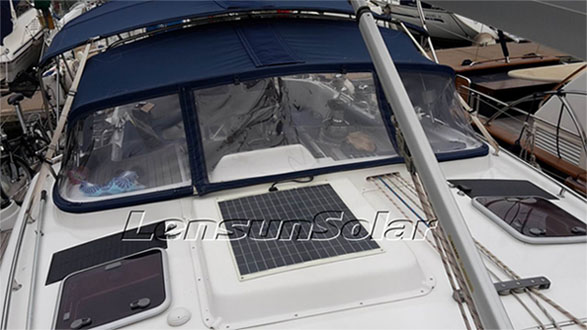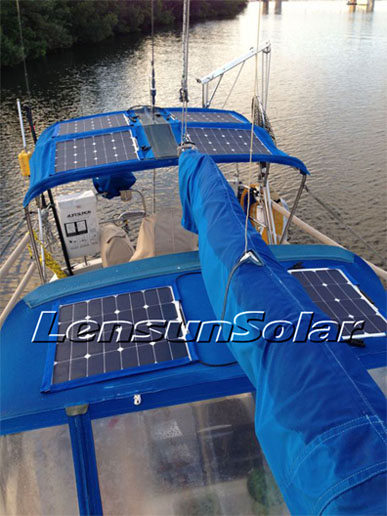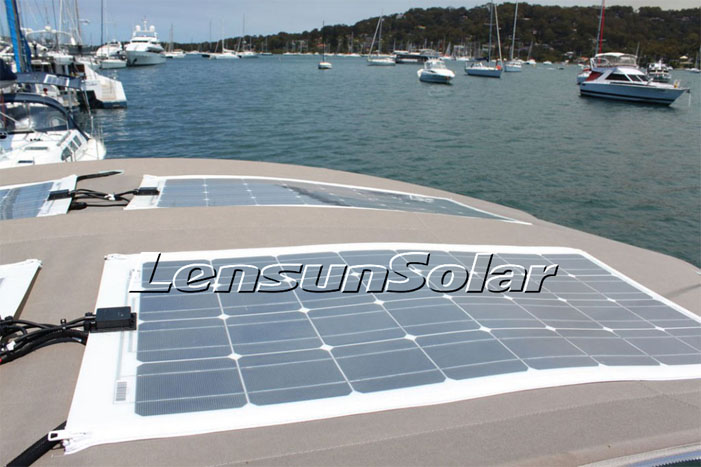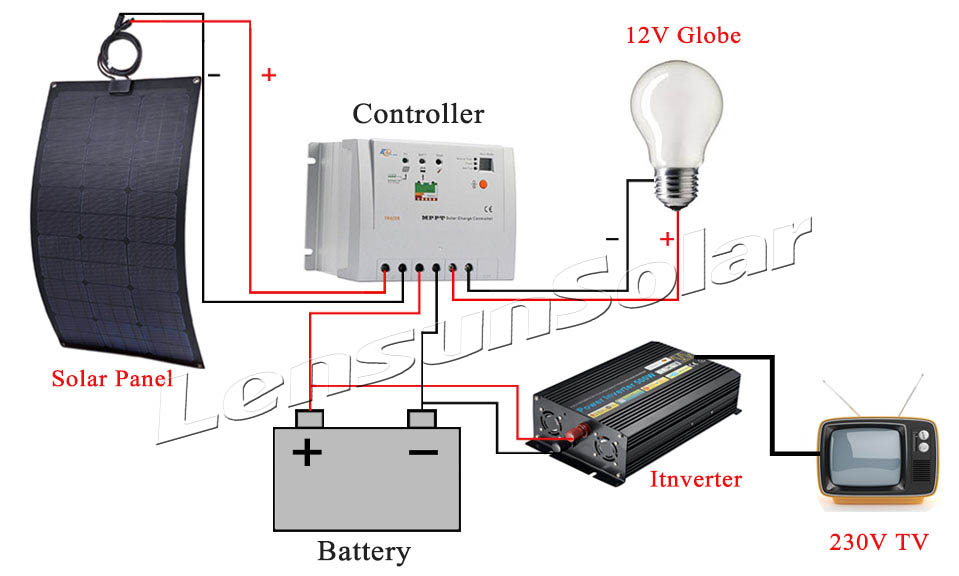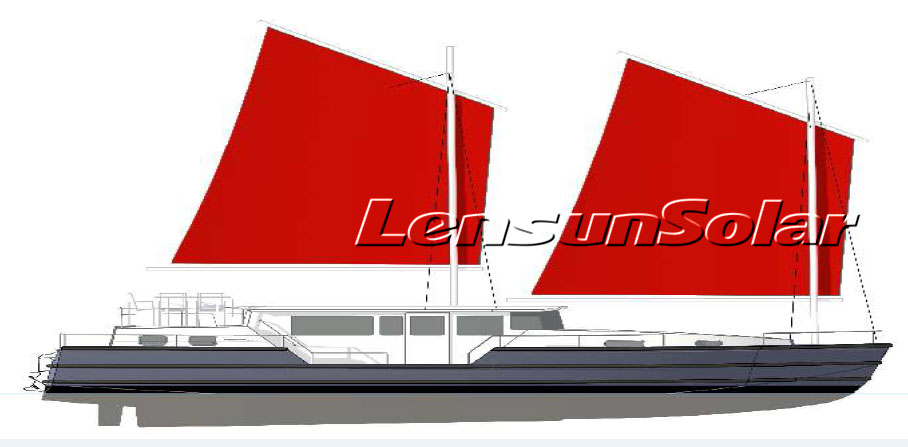How to install marine solar panels?
The applications of flexible solar panels to boating are in fact the perfect combination between nature and culture: flexible, lightweight, functional and high efficiency.
Lensun solar panels are also certified for the marine environment. The first layer is ETFE materials which import from Japan, this materials can absorb sunlight and can not reflect light, and resistance to seawater corrosion, so you won't have to worry about corrosion.
The applications of flexible solar panels to boating are in fact the perfect combination between nature and culture: flexible, lightweight, functional and high efficiency.
Lensun solar panels are also certified for the marine environment. The first layer is ETFE materials which import from Japan, this materials can absorb sunlight and can not reflect light, and resistance to seawater corrosion, so you won't have to worry about corrosion.
The Features of Lensun Semi-flexible Solar Panels:
- Thin and Semi-flexible Panels
- Ultra lightweight and durable
- High Stain Resistant, Easy to Clean
- High Transmission offer excellent efficiency
- Longer life, Ageing resistance
- Resistance to seawater corrosion
- High flame retardancy, Safe installation
Marine solar panels are the best suitable option that provides the most power in the smallest space available. These allow you to enjoy your experience with the sea, without having to worry about running out of energy, whether you are using an electric boat, a yacht or a sailing boat.
Learning how to install marine solar panels will be vital for the sailor who wants their advantages, but first he or she must learn which solar panels are best . There are three common types of solar cells are used in solar panels today, each with its own advantages. The sailor need to know the types available and the advantages of each.
Types of Solar Panels
- Monocrystalline are single silicon cells grown into larger crystals, then cross-section cut into small wafers to form individual cells that are later joined together to form a solar panel. This cell type has a very high conversion efficiency which means it takes up less space on deck.
- Polycrystalline cells have even higher conversion efficiency, take up even less space, but still lack shade protection.
- Amorphous silicon cells have lower conversion efficiency, and take up more space, but do have shade protection. This can be especially important on a sailboat.
Marine solar panels are available in both hard and flexible types. Hard solar panels can be attached to the deck, while flexible solar panels might be attached to deck or canvas.
Since solar modules (solar panels) are very sensitive to shading. Once a solar cell or a portion of a cell is shaded it becomes less effective. The design of some Monocrystalline solar modules offers protection from partial shading by including a bypass diode. Shadow protected means that a panel continues to charge when part of the cells are in a shadow, like a stay, which is a great advantage on a sailboat. Yes, Lensun Mono Semi-Flexible Solar panels also install bypass diode inside junction box.
Size and Number of Solar Panels
Learning how to install marine solar panels will include calculations to determine what size and how many solar panels you will need. This information is readily available on the Internet by searching the question: “What size solar panel do I need” on your favorite search engine. The rule of thumb is to allow for 20% more solar panel power than you estimate you will need.
Placement of Solar Panels
The best places depend on the boat’s configuration and size of the panels. In placing marine solar panels, consider the use of extra bars/braces to secure the panels. You obviously want them to remain stable. And installing them is in the sun and selecting locations that will get maximum sunlight without shaded spots.
Mounting and Wiring
Your marine solar panels should have clear instructions for installation. In addition to those, consider the following.
How many ways to install the flexible solar panels ? As we know the semi-flexible is popular in the Marine power.
- Mounted by holes and frame
- Adhesives for mounting flexible solar panels
- Mounted flexible solar panels by Velcro
- Marine solar panels with zips can be easily sewn in
Most marine solar panel systems have three main components:
- Solar panels to collect sunlight and produce a charge for you.
- Charge controller to regulate the charge entering your battery and avoid overcharging it.
We recommend to use MPPT Solar Controller. MPPT circuit solar controllers are considerably more elaborate than PWM. The MPPT technology to track the maximum power voltage point of solar panels as it varies depending on sunlight exposure and temperature.
- Batteries to store the energy your solar panels created.
Once marine solar panels have charged your batteries, you can use that energy to run most 12V DC appliances. These might include your safety lights, regular lighting, pumps, and fans, as well as small appliances. If you add an Off-grid power inverter, you can also run 220V/230V AC appliances such as a microwave, radio, satellite dish, or radio. A power inverter is a separate unit, not mentioned above, that transforms the current coming out of the battery into that required by most appliances.
The wires from the solar panels to the batteries should be tinned marine grade. Ordinary automotive wire may look similar to marine grade wire, but after a few months in the marine environment it can suffer a loss of conductivity. A quality charge controller with settings for gel or wet cell batteries is a must to keep from frying the batteries. The positive lead from the solar panel should be fused to protect from over-current. If a voltmeter is not on the system now, give thought to installing one to check charge or get a solar charge controller with a meter.
On sunny days, the batteries are charged at the end of the day. We only have to run the engine to charge the batteries on cloudy days. The solar panel starts charging when the sun comes up. By 10:00 A.M. the batteries are well on the way to recovery from the previous night's use.
Weekend cruisers and even day-sailors may profit from a backup way to charge the batteries. Outboard powered boats may sorely need a way to charge batteries. Boats on moorings could benefit greatly from a solar panel. Solar panels are the cleanest and quietest way to charge the batteries.

Contact information
www.lensunsolar.com
Tel: US +1 720-608-1288
China: +86 15759769602
Whatsapp: +86 15759769602
Skype: lensunsolar
Email: info@lensunsolar.com, lensunsolar@gmail.com

